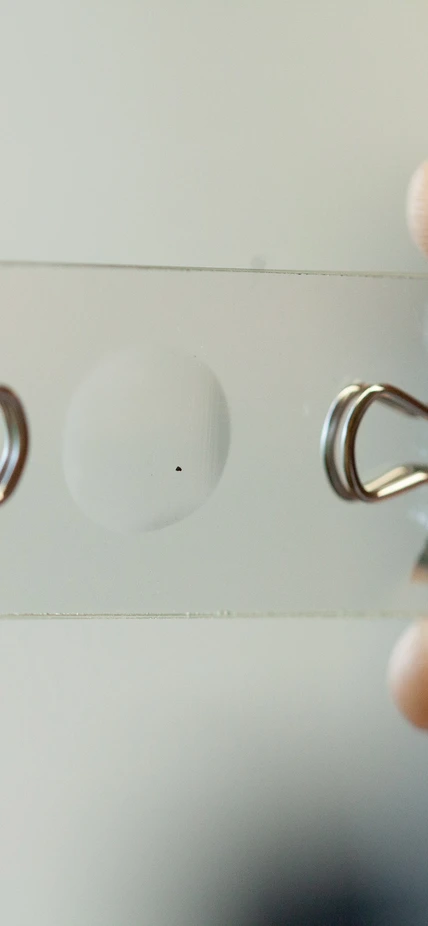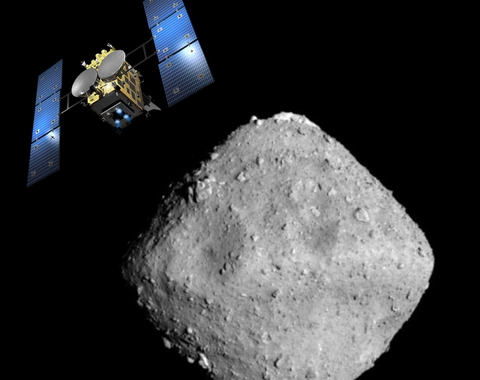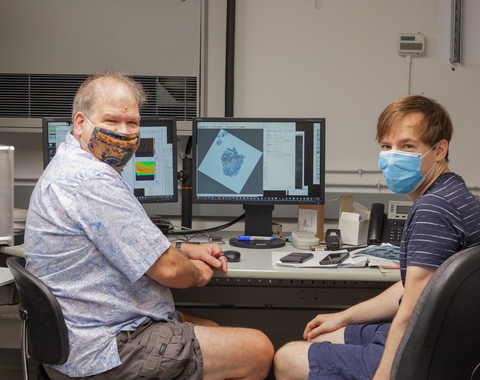By Katy Cain
Larry Nittler, a cosmochemist at the Carnegie Earth and Planets Laboratory (EPL), peers at his computer screen while the NanoSIMS machine scans a sample of the Ryugu asteroid and displays it in all of its grainy glory. Light and dark patches light up the screen—a language of atoms and isotopes that cosmochemists like Nittler and postdoctoral researcher Jens Barosch read to piece together the early history of our Solar System.
The samples finally arrived at the EPL campus in mid-August 2021 after being delivered to Earth by JAXA’s Hayabusa2 mission in late 2020. The arrival of Ryugu samples is pivotal for both Nittler and the entire field of cosmochemistry. Nittler explained, “People have wanted to return samples from this kind of asteroid for so long. We spent years building up so much knowledge from meteorites and developed all of these techniques in preparation for this.”
He continued, “Now we’re getting the samples, and it's just so exciting.”
No, this is not a snack preserved for later; it’s a foil-wrapped slide holding a tiny sample of the Ryugu asteroid. Photo by Katy Cain, Carnegie Institution for Science
The Hayabusa2 mission brought about 5 grams of Ryugu back, which doesn’t sound like much, but scientists can learn a lot from even a nanogram of material with modern techniques. Nittler says, “ We would have to measure 5 billion times what we’re doing here to use up the sample.”
Nittler is currently using the NanoSIMS ion microprobe (a commercial instrument installed at Carnegie in 2006) to measure the isotopic ratios of hydrogen, carbon, and nitrogen in organic particles in four Ryugu samples. He got these from collaborators at the U.S. Naval Research Lab (NRL), who cut the tiny Ryugu particles into extremely fine slices with a diamond knife and mounted them on substrates so scientists at EPL could do this kind of NanoSIMS analysis. NRL will mount slices of the same samples for transmission electron microscopy and synchrotron transmission microscopy.
Scientists believe that Ryugu is related to a type of meteorite called a carbonaceous chondrite. These meteorites have a few percent carbon, and they tend to be a deep black color. When the first photos of the Ryugu samples came through in late 2020, Nittler was excited because the asteroid samples looked very similar to his meteorite samples.
Fragments of the Tarda carbonaceous chondrite meteorite that fell in Morocco in 2020 and that has a similar appearance to the returned Ryugu samples. Photo by Katy Cain, Carnegie Institution for Science
“That carbon is very interesting,” explains Nittler. “It’s a macromolecular organic goo, and it’s possibly the main source of carbon for the Earth.”
If the scientific community finds carbon particles in the Ryugu samples, they may represent the initial building blocks that eventually became life on Earth. They may also confirm that the carbonaceous chondrites probably originate from asteroids like Ryugu. By studying them, scientists like Nittler hope to understand how carbon evolved as our Solar System developed.
The Earth and Planets Laboratory also has another sample on campus that came directly from the Japanese Space Agency (JAXA). This sample is unsliced but will be broken up and studied similarly.
“It's huge,” states Nittler referring to the grain of Ryugu, “It's almost half a millimeter across.”
The tiny speck in the middle of this slide is the “huge” sample of Ryugu.
Nittler has been waiting to get his hands on a piece of an asteroid like Ryugu for his entire career, and he’s sure the samples will be studied for decades to come. Nittler muses, “Just this week, I had a phone call with a grad student in Scotland who said, ‘It feels like my whole Ph.D. has been building up to this point.’”
“I told him ‘Me too! But mine started 30 years ago!’”


